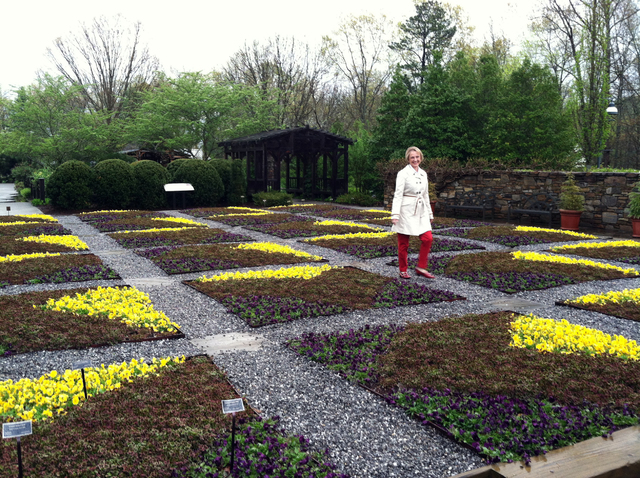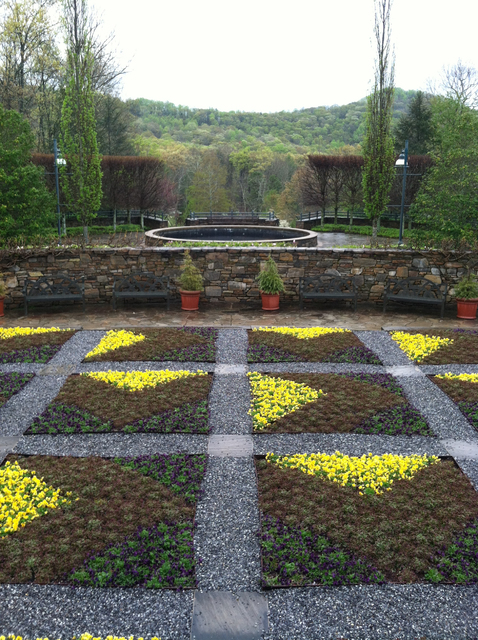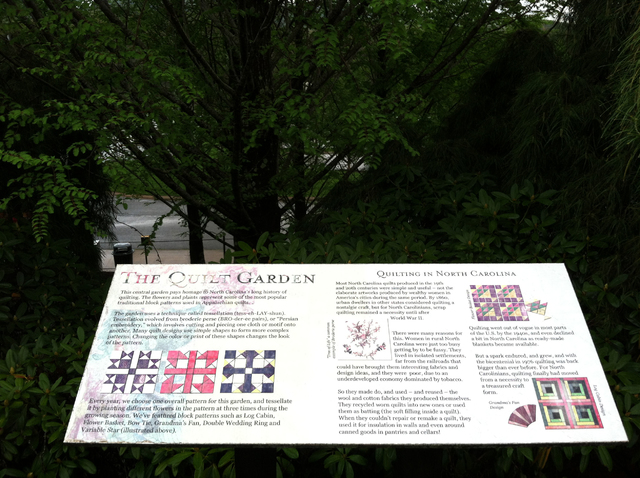ASHEVILLE, N.C. — It’s not uncommon to see floral patterns on quilts. But how about flowers planted in a quilt pattern? ADVERTISING ASHEVILLE, N.C. — It’s not uncommon to see floral patterns on quilts. But how about flowers planted in
ASHEVILLE, N.C. — It’s not uncommon to see floral patterns on quilts. But how about flowers planted in a quilt pattern?
The quilt garden at the North Carolina Arboretum in Asheville is designed to mimic the shapes and colors found in traditional quilt block patterns. The quilt theme connects the garden to the arts and crafts heritage of the Southern Appalachian region, according to Clara Curtis, director of design, events and education at the arboretum.
Asheville is surrounded by the Blue Ridge Mountains, which are part of the Appalachian mountain range, with stunning views from many parts of the arboretum. A sign for visitors to the quilt garden explains that quilting in the North Carolina mountains wasn’t just a hobby, but was a needed skill well into the 20th century. Women — many of them poor and isolated from towns and cities — recycled scraps of fabric into useful blankets that also often happened to be beautiful.
The arboretum has been planting a quilt garden for 20 years. The garden has 24 small beds divided by walkways. Each bed is landscaped like a quilt square, inspired by block patterns like log cabin, double wedding ring, flower basket, variable star or bow tie.
The plantings are done using design principles from tessellation, a quilting technique that uses simple shapes to create more complex patterns. Each year, one overall pattern is chosen for the garden, and it’s tessellated by planting different flowers at three different times during the growing season. Early this spring, purple and yellow pansies and four-leaf clover were planted in a triangular pattern inspired by the traditional rail-fence quilt design. For summer, the quilt garden will use dusty miller, baby’s breath and the polka-dot plant with cosmos accents. One square measures 8-by-8 feet, so the 24 squares altogether are 1,536 square feet.
To sustain the patterns across a season, plants chosen for the quilt garden ideally flower continuously with strong colors, without the need to remove dead blossoms. Plants that don’t grow too tall or fast are also important for maintaining the look of the pattern. Weather in the mountains can be cold in spring with full sun in summer, so the plants must also tolerate late frosts and variable temperatures.
Curtis’ advice for home gardeners who might want to try a quilt garden is to plant one square, or four squares divided by pathways if a larger space is available. She said the plantings could be in raised beds or mounted with cut turf edges around the squares. Sketch your design on graph paper first, and calculate the area of each section of the quilt block design that you’re planning to use to help determine how many plants you’ll need.
Limit the number of sections or divisions inside the pattern to no more than five for an 8-square-foot bed. “If the pattern is too intricate, it will be difficult to translate into floral plantings,” she said.
Make sure there’s good drainage. Select plants that will have similar watering needs. Plants that grow no taller than 12 inches are the easiest to maintain.
“Color choices,” Curtis notes, “are endless.”
The North Carolina Arboretum was established in 1986 by the state as an affiliate of the University of North Carolina. It’s located on 426 acres in the Pisgah National Forest near the Biltmore Estate, which was landscaped for George Vanderbilt by Frederick Law Olmsted. Olmsted wanted to establish an institution like the arboretum near the Biltmore to preserve the land and serve as a place for research and education, but he died in 1898, before that part of his vision for the property could be realized. Olmsted is best-known for designing New York’s Central Park, but he also designed many other parks and gardens around the country.





